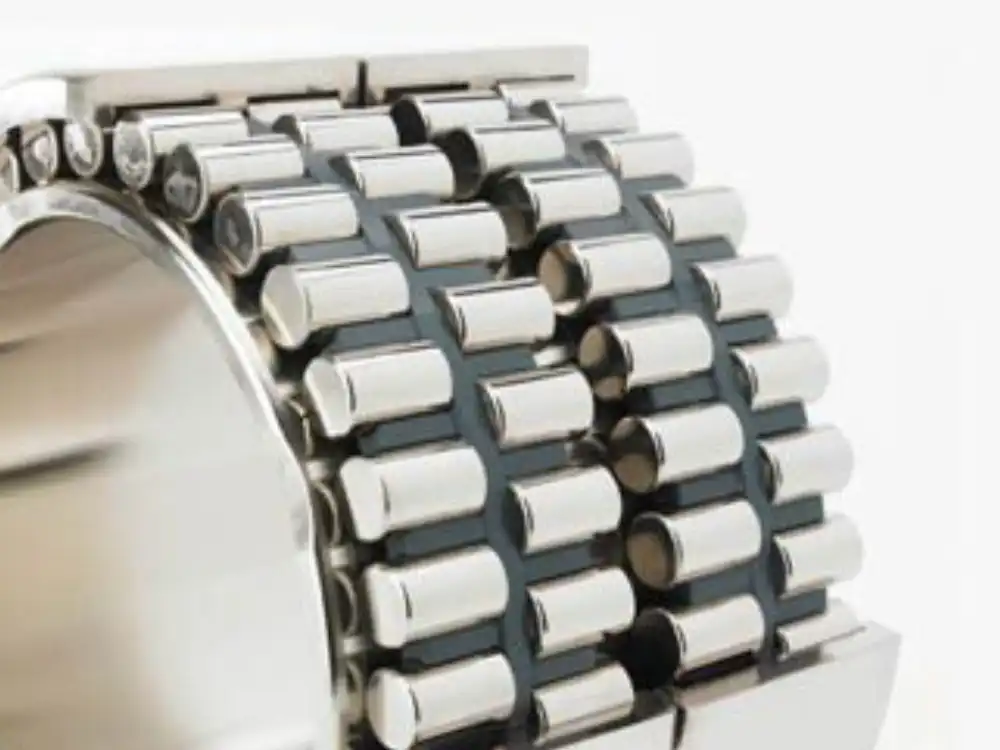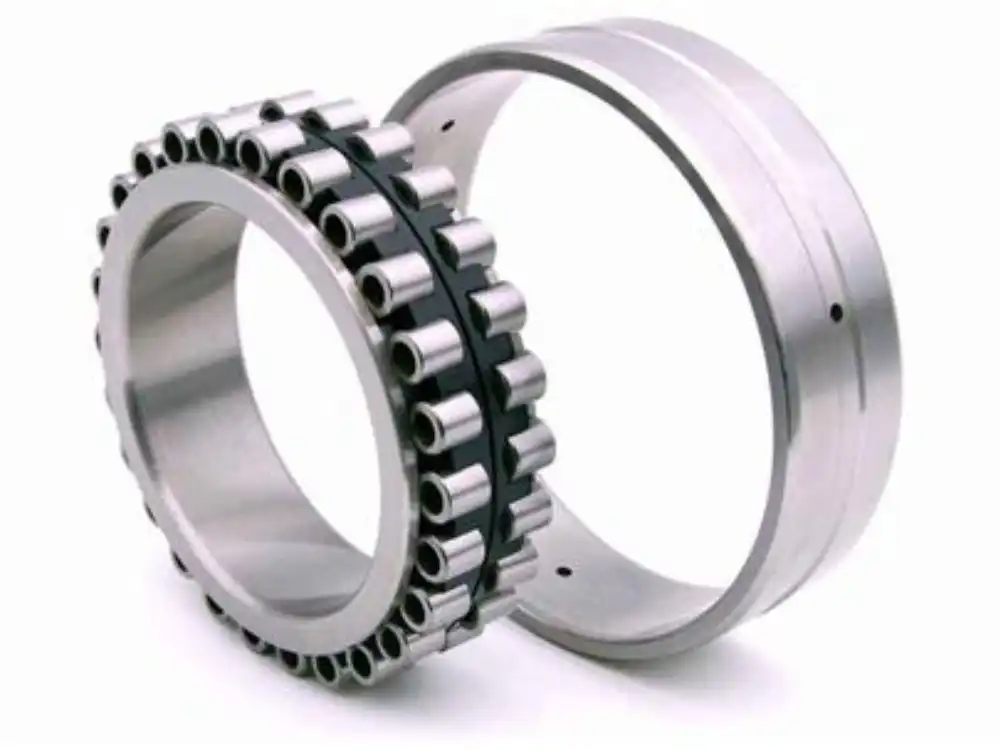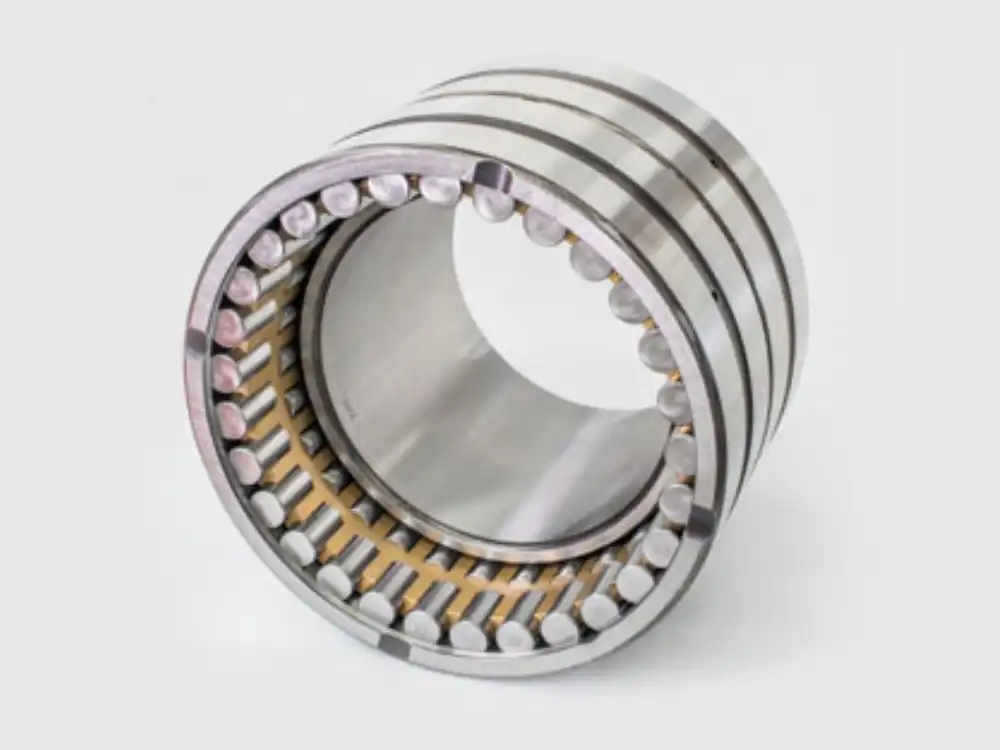What Factors Influence the Lifespan of Large Cylindrical Roller Bearings?
Large Cylindrical Roller Bearings play a crucial role in industrial machinery, supporting heavy radial loads while facilitating smooth rotational movement. Understanding the factors affecting their lifespan is essential for maintenance engineers, equipment designers, and facility managers who aim to optimize performance and reduce downtime. This analysis explores the key determinants of bearing longevity, from proper selection and installation to maintenance practices and operating conditions.

How Do Operating Conditions Affect the Durability of Large Cylindrical Roller Bearings?
Impact of Load and Speed Variations
The relationship between operational load, speed, and bearing longevity is critical. Large Cylindrical Roller Bearings are designed for specific load capacities, and exceeding these ratings accelerates wear. Heavy radial loads compress rollers against races, increasing friction and heat that degrades lubricants and metal surfaces. Similarly, operating beyond designed speed limits creates centrifugal forces that affect roller stability and lubricant distribution. Many premature failures occur when bearings are undersized for actual operational demands, highlighting the importance of thorough load analysis during specification. Engineers must consider both steady-state loads and transient peak loads during machine startup, shutdown, or process variations to ensure appropriate bearing selection for optimal service life.
Temperature's Role in Bearing Performance
Temperature significantly influences the lifespan of Large Cylindrical Roller Bearings through multiple mechanisms. Excessive heat accelerates lubricant degradation, reducing viscosity and compromising the oil film between rolling elements and races. As temperatures exceed 80°C, most industrial lubricants oxidize rapidly, forming deposits and losing protective properties. High temperatures also alter bearing component materials through thermal expansion, reducing internal clearances and creating a destructive cycle of increased friction and heat. Conversely, cold environments cause lubricant thickening, impeding distribution and increasing starting torque. Temperature fluctuations create additional stress through repeated expansion and contraction. Monitoring bearing temperature provides valuable diagnostic information, with unexpected increases often signaling developing problems requiring attention before catastrophic failure.
Environmental Contamination Factors

Contamination represents one of the greatest threats to Large Cylindrical Roller Bearings. Particulate contaminants act as abrasive agents when they infiltrate the bearing assembly, disrupting the lubricant film and creating surface irregularities on precision-finished components. Even moderate contamination can reduce bearing life by 40-60%. Moisture causes corrosion and degrades lubricants through oxidation and emulsification, while chemical contaminants can attack bearing materials and seals. The contamination risk varies by industry, with mining, cement production, and steel manufacturing creating particularly harsh environments. Effective contamination control strategies—including appropriate sealing solutions, regular lubricant analysis, and filtered lubrication systems—represent essential investments for extending bearing life in challenging industrial environments.
What Maintenance Practices Can Extend the Life of Large Cylindrical Roller Bearings?
Lubrication Management Strategies
Proper lubrication is perhaps the most influential factor in maximizing Large Cylindrical Roller Bearings lifespan. The lubricant forms a critical barrier between components, reducing friction, dissipating heat, and preventing metal-to-metal contact. Selecting the appropriate lubricant requires careful consideration of operating conditions, including load, speed, and temperature. High-temperature applications may need synthetic oils with superior oxidation resistance, while heavy-load scenarios might require lubricants with extreme pressure additives. Establishing optimal lubrication intervals is equally important; over-lubrication causes churning and heat generation, while under-lubrication leads to inadequate film thickness and accelerated wear. Modern approaches incorporate condition-based lubrication using oil analysis to monitor contamination, viscosity changes, and additive depletion. Organizations implementing comprehensive lubrication management typically report 200-300% improvements in bearing life compared to poorly managed applications.
Alignment and Installation Best Practices
Precision installation and alignment significantly influence the operational lifespan of Large Cylindrical Roller Bearings. Even minor misalignment creates uneven load distribution, generating localized stress that accelerates fatigue failure. For large bearings, alignment errors as small as 0.001 inches per inch of shaft diameter can reduce service life by 50%. Proper mounting procedures require clean environments, careful handling techniques, and specialized tools like induction heaters and hydraulic mounting aids. Equally important are correct shaft and housing fits; excessive interference reduces internal clearance, while insufficient interference may allow fretting or spinning of bearing rings. Modern installation increasingly incorporates precision measurement technologies, including laser alignment systems and dial indicators. Organizations investing in technician training and appropriate installation equipment typically experience significantly fewer premature bearing failures.
Condition Monitoring and Predictive Maintenance
Robust monitoring and predictive maintenance enable the transition from reactive replacement to proactive life extension for Large Cylindrical Roller Bearings. Vibration analysis detects subtle changes in signatures that indicate developing faults before audible noise or temperature increases become apparent. Specific vibration frequencies correlate with particular failure modes, allowing diagnostic systems to differentiate between roller defects, raceway damage, cage issues, or lubrication problems. Acoustic emission monitoring detects high-frequency stress waves during the earliest stages of surface fatigue. Thermal monitoring through infrared imaging offers additional insight into bearing health, while lubricant analysis provides information on particle count, viscosity changes, and contamination levels. Organizations implementing multi-parameter condition monitoring typically achieve 70-90% reductions in unexpected bearing failures while extending average service life.
What Design and Selection Factors Influence Large Cylindrical Roller Bearing Longevity?

Material Quality and Manufacturing Precision
Material quality and manufacturing precision fundamentally determine the potential service life of Large Cylindrical Roller Bearings. Premium bearing steels with carefully controlled heat treatment provide the foundation for long-lasting performance, balancing wear resistance with fracture toughness. Metallurgical purity is critical, as microscopic inclusions can initiate fatigue cracks under cyclic loading. Manufacturing precision directly influences bearing longevity through its impact on geometric accuracy. Large Cylindrical Roller Bearings require tight tolerances on dimensional parameters, including roundness, cylindricity, and surface finish. Advanced production processes achieve surface finishes measured in microinches that minimize friction and maximize lubricant film effectiveness. The difference between standard commercial-grade and precision-manufactured bearings can translate to a 200-300% variation in expected service life under identical operating conditions.
Load Rating and Application Match
Appropriate load rating selection represents a fundamental aspect of bearing engineering. Each Large Cylindrical Roller Bearing design carries specific dynamic and static load ratings that define its capacity while achieving expected service life. When bearings operate under loads exceeding design parameters, stress concentrations dramatically accelerate fatigue mechanisms, with life often decreasing as an inverse cubic function of load increases. Proper application matching requires analysis of nominal loads and transient conditions, including startup forces and potential misalignment. Safety factors in load rating selection vary by application criticality; non-critical applications might use margins of 1.2-1.5 times calculated loads, while critical applications often justify safety factors of 2.0-3.0. Modern computational tools enable engineers to simulate stress distributions within bearings under various scenarios, facilitating more precise matching of specifications to requirements.
Clearance and Preload Considerations
Internal clearance plays a decisive role in determining the behavior and lifespan of Large Cylindrical Roller Bearings. This parameter affects load distribution, operating temperature, noise characteristics, and fatigue life. Clearance selection must account for interference fits during mounting and thermal expansion during operation, both reducing effective running clearance. Insufficient clearance leads to excessive preloading, causing increased friction and temperature. Conversely, excessive clearance allows undesirable shaft movement and uneven loading of rolling elements. Application-specific selection considers factors including rotation speed, load magnitude and direction, temperature differentials, and precision requirements. High-speed applications typically benefit from tighter clearances, while heavy-load applications may require greater clearance to accommodate elastic deformation. Proper clearance selection can extend bearing life by 30-50% compared to generic specifications.
Conclusion
The lifespan of Large Cylindrical Roller Bearings depends on a complex interplay of factors spanning design, selection, installation, operation, and maintenance. By understanding how load ratings, material quality, operating conditions, lubrication, and contamination control collectively influence bearing performance, engineers and maintenance professionals can implement effective strategies to maximize service life and reliability. Proper application matching, condition monitoring, and proactive maintenance represent key approaches for extending bearing longevity in demanding industrial environments.
Luoyang Huigong Bearing Technology Co., Ltd. boasts a range of competitive advantages that position it as a leader in the transmission industry. Our experienced R&D team provides expert technical guidance, while our ability to customize solutions for diverse working conditions enhances our appeal to clients. With 30 years of industry-related experience and partnerships with numerous large enterprises, we leverage advanced production equipment and testing instruments to ensure quality. Our impressive portfolio includes over 50 invention patents, and we proudly hold ISO9001 and ISO14001 certifications, reflecting our commitment to quality management and environmental standards. Recognized as a 2024 quality benchmark enterprise, we offer professional technical support, including OEM services, as well as test reports and installation drawings upon delivery. Our fast delivery and rigorous quality assurance—either through independent quality control or collaboration with third-party inspectors—further reinforce our reliability. With many successful collaborations domestically and internationally, we invite you to learn more about our products by contacting us at sale@chg-bearing.com or calling our hotline at +86-0379-65793878.
References
1. Harris, T. A., & Kotzalas, M. N. (2023). Essential Concepts of Bearing Technology: Rolling Bearing Analysis and Performance Assessment. CRC Press, Boca Raton, FL.
2. SKF Group. (2022). Bearing Damage Analysis: A Practical Guide to Understanding and Preventing Premature Bearing Failures. SKF Publications, Gothenburg, Sweden.
3. Sadeghi, F., Jalalahmadi, B., Slack, T. S., & Raje, N. (2022). "A Review of Rolling Contact Fatigue." Journal of Tribology, 131(4), 041403.
4. Gnagy, R. L., & Thompson, J. W. (2023). "Environmental Effects on Roller Bearing Performance in Heavy Industry Applications." Tribology Transactions, 56(3), 349-367.
5. International Organization for Standardization. (2023). ISO 281:2023 - Rolling bearings -- Dynamic load ratings and rating life. ISO Publications, Geneva, Switzerland.
6. Zheng, L., Chen, Y., & Wang, H. (2024). "Advancement in Material Technology for Extended Life Cylindrical Roller Bearings in Extreme Environments." Wear, 392-393, 152-169.

